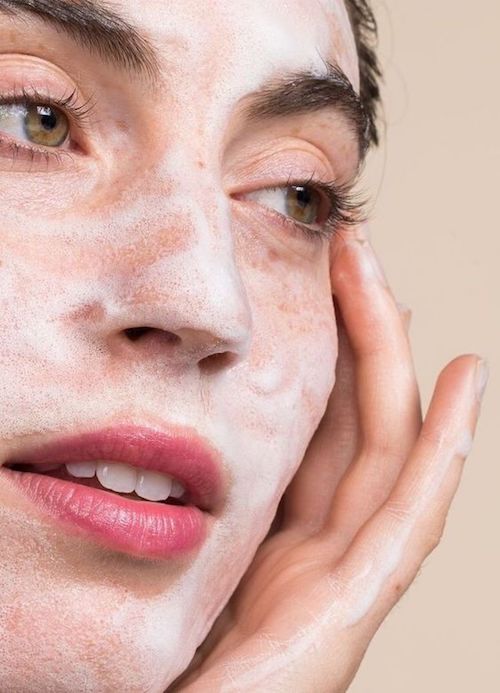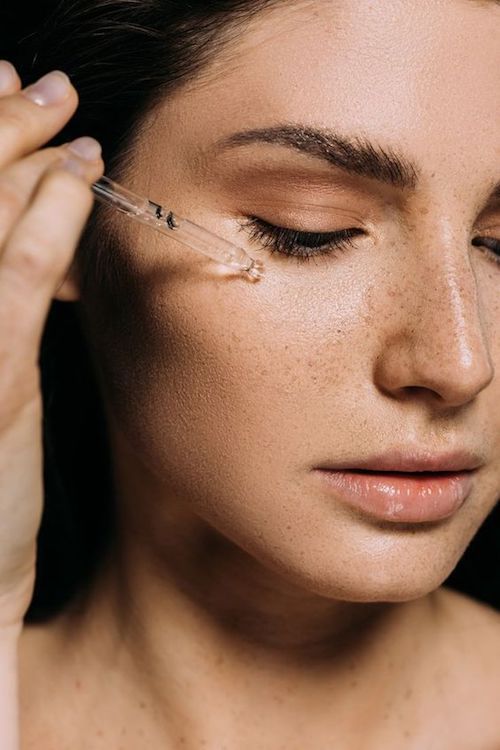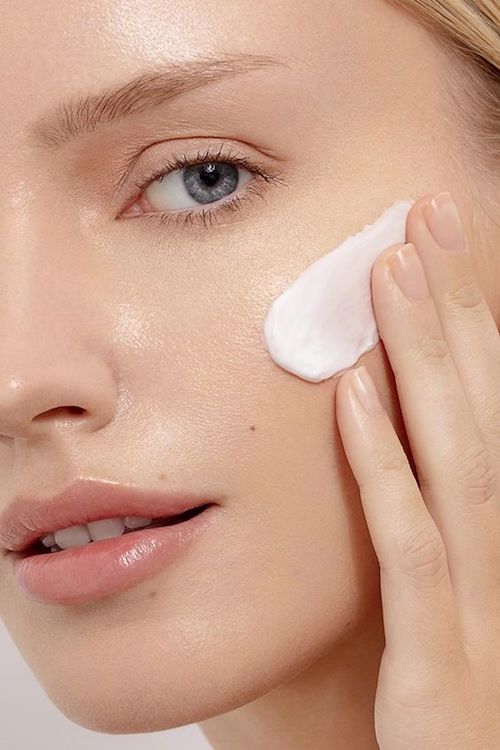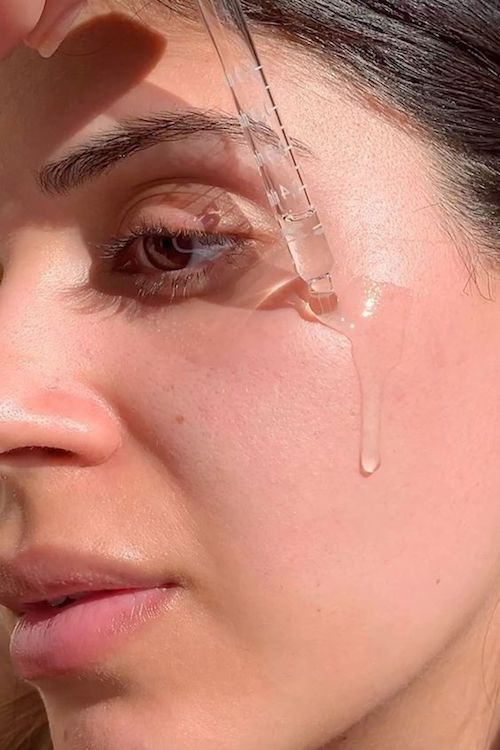Best Ingredients to Use For Acne-Prone Skin
Best Ingredients to Use For Acne-Prone Skin
While breakouts come and go, there’s no one-size-fits-all definition for what it means to have acne-prone skin. Acne comes in all shapes, sizes and depths below the skin’s surface. The type(s) of breakouts you experience depends on their root cause and how you should treat your acne-prone skin. Most types of acne are caused by clogged pores, excess sebum (oil production), build-up from dead skin cells, trapped dirt, bacteria or oil, hormonal fluctuations from stress, your menstrual cycle or lifestyle changes.
Implementing a consistent, thoughtfully-curated skincare routine can help you manage your acne-prone skin. Look for cleansers, toners, moisturizers, and spot treatments with the right ingredients for your acne and skin type. Certain ingredients will work best for dry, oily or combination skin. Keep the differences between inflammatory acne (pimples, pustules, nodules and cysts) and noninflammatory acne (whiteheads and blackheads) in mind.
Here are some of the best ingredients to look for when seeking to treat and manage acne-prone skin.

Credit: Seventeen/Pinterest
Salicylic Acid
Known for its exfoliating benefits, salicylic acid is a beta-hydroxy acid (BHA) derived from willow bark. It unclogs pores by penetrating the skin and dissolving build-up from dead skin cells, oil or bacteria. Salicylic acid is often used in cleansers for acne-prone skin and spot treatments to treat surface-level spots like whiteheads (closed plugged pores), blackheads (open plugged pores) and pimples (pustules). Use salicylic acid-containing formulas to treat mild acne or prevent future breakouts. Depending on their salicylic acid concentration, these acne-fighting products should be applied 1-3 times daily. Salicylic acid is the most common type of BHA used in OTC skincare products for acne-prone skin. It contains anti-inflammatory and antibacterial properties to reduce redness, swelling and potential infections or worsening breakouts.
Like every BHA, salicylic acid is an oil-soluble ingredient that penetrates beyond the surface into the deeper layers of the skin to clear congested skin and prevent future breakouts (offering a similar effect to a mild chemical peel). All-over face products containing salicylic acid are best for combination or oily skin types. If you have dry skin or flaky patches, use these products exclusively on the T-zone or over blemishes.

Credit: @amandakhamkaew via @zensaskin/Instagram
Benzoyl Peroxide
Benzoyl peroxide is another popular OTC ingredient used to treat mild to moderate acne. It clears up acne by killing bacteria and unclogging pores filled with dead skin cells, bacteria and oil (excess sebum). Benzoyl peroxide is the best option for inflammatory breakouts (swollen red pimples or bumps that contain pus-like papules, cysts and nodules) and can be found in cleansers, gels, spot treatments and washes. Apply benzoyl peroxide up to 2 times a day, depending on the severity of your acne, skin type and benzoyl peroxide concentration used. Most OTC products for acne-prone skin contain 4-10% benzoyl peroxide. For moderate or more severe acne, you can get a stronger, prescription-only benzoyl peroxide treatment (typically a combination of benzoyl peroxide and clindamycin or adapalene) from your dermatologist.
While salicylic acid is more readily available, benzoyl peroxide is considered to be the more effective of the two OTC treatment options (in most cases). However, salicylic acid may be better for treating noninflammatory acne (whiteheads and blackheads) than benzoyl peroxide.

Credit: Jasmeen Sada/Pinterest
Vitamin C
Known for its anti-inflammatory benefits, vitamin C helps reduce the redness and swelling that accompanies breakouts. Vitamin C serums have been clinically proven to significantly improve acne lesions. A 2009 study concluded that this vitamin C derivative reduced patients’ acne by almost 50% in 8 weeks. When combined with a 2% retinol, vitamin C appeared to have an even more beneficial effect and reduced the appearance of participants’ acne by over 63%.
While the ingredient can improve active acne, vitamin C also minimizes its lasting effects. Vitamin C’s high antioxidant content stimulates collagen production. This process increases cellular turnover to help fade acne scars, even skin tone and reduce hyperpigmentation. When used alongside microneedling, participants of a 2014 study found that applying a 15% vitamin C topical cream every week moderately improved their acne in only 4 weeks.
Use vitamin C twice daily. If you’re using a vitamin C serum, make sure to apply it before your moisturizer to ensure the nutrients absorb properly into your skin. While vitamin C generally helps clear acne, too much vitamin C can cause breakouts and irritation – especially if you have sensitive skin. If your skin gets easily irritated, use a formula with a 10% vitamin C concentration or lower.

Credit: Vogue Italia/Pinterest
Alpha Hydroxy Acids
Alpha hydroxy acids (AHAs) are a group of water-soluble acids derived from sugary fruits (and sour milk) that are most commonly used for acne-prone, dry or aging skin. Glycolic acid and lactic acid are the most popular types of AHAs found in skincare products. They work by gently exfoliating dead skin cells off the top layer of your skin to improve tone and texture concerns. Alpha hydroxy acids unclog pores to clear any buildup from dirt, bacteria, oil or dry patches to prevent breakouts (especially blackheads or whiteheads) and keep acne-prone skin under control.
Glycolic and lactic acids are both rich in antioxidants and have antibacterial properties to keep your skin clear and healthy. These ingredients stimulate collagen production to strengthen and hydrate the skin barrier to prevent impurities from getting trapped in the skin. This process prevents blemishes, rashes and infections, improves skin elasticity and reduces pore size, hyperpigmentation (acne scars or sun damage), fine lines and wrinkles.
Alpha hydroxy acids can be found in cleansers, serums, peels and lotions. Once your skin is used to them, you can use AHA-containing products once every day. Due to their exfoliating effects, these products can make your skin more sensitive to the sun. It is best to use them during your nighttime routine and follow up with SPF 50+ sunscreen the next morning.

Credit: Jazmin Rodriguez/Pinterest
Retinol
As a staple in any skincare routine, retinol is a vitamin A derivative that offers deeply nourishing and exfoliating benefits to improve breakouts or acne-prone skin. Retinol penetrates the top and middle layers of the skin to unclog pores and remove bacteria, dirt, oil or dead skin cells that can cause blemishes to form. It promotes collagen production and accelerates cellular turnover to protect against future breakouts and reduce the appearance of acne scars over time.
Consider that, while beneficial, it can take some time for your skin to adjust to using retinol. Start your new retinol regimen with a low-dose product (with a 0.01-0.03% concentration), especially if you have sensitive skin. Over time, your skin will adjust to the retinol. Once your skin gets used to the product (smooth skin with no signs of irritation), you can gradually increase the dosage (with retinol containing up to a 1% concentration).
Apply your retinol at night, so it can soak into your skin without being broken down by the sun. Always use retinol after washing your face and before applying your moisturizer (regardless of your skin type).
Never combine AHAs, BHAs or benzoyl peroxide with retinol in your routine. Both AHAs and BHAs have exfoliating properties, which can strip moisture from your complexion and cause further skin irritation. Avoid using benzoyl peroxide and retinol together as their benefits cancel each other out and make both ingredients ineffective.

Credit: The Skincare Edit/Pinterest
Calendula Oil
Derived from the marigold flower, calendula oil is known for its anti-inflammatory, antifungal and antibacterial properties. It contains a high level of antioxidants, which stimulates collagen production and accelerates cellular turnover. This process unclogs your pores by removing dead skin cells, dirt, excess sebum (oil) and bacteria to calm breakouts and manage acne-prone skin. Calendula oil hydrates the skin and strengthens the skin barrier to prevent water loss, cracked skin and potential infection. This restorative ingredient also helps minimize acne scarring and contains UV ray protection (equivalent to SPF 14) to prevent future sunspots or hyperpigmentation.

Zensa Healing Cream pairs medicinal-grade calendula oil with grapefruit oil, another natural antibacterial and anti-inflammatory ingredient, to keep bacteria, oil and dead skin cells out of your pores and control acne-prone skin. Our cruelty-free formula also contains aloe vera (antibacterial) and hyaluronic acid to hydrate the skin to help remove dead skin cells that contribute to clogged pores.

Tea Tree Oil
Extracted from the tea tree plant, tea tree oil has anti-inflammatory, antifungal and antibacterial properties to clear bacteria and excess sebum from the skin. It helps treat fungal acne and minimizes the look of pores. In a 2017 study, researchers found that participants saw that using products containing tea tree oil significantly improved mild to moderate acne after 12 weeks. When shopping, always look for 100% tea tree oil. While not as strong as benzoyl peroxide and salicylic acid, tea tree oil is a great natural alternative to control breakouts and acne-prone skin.
To use, dilute 1-2 drops of tea tree oil into a carrier oil (olive oil, coconut oil, almond oil, etc.). After washing your face with a gentle cleanser, apply this tea tree oil solution to your blemishes (make sure to do a patch test on your arm beforehand) and follow up with your moisturizer. Complete this routine daily for best results.
